Birds of Ding Darling Wildlife Refuge: A Birdwatcher’s Paradise
Ding Darling National Wildlife Refuge, located on Sanibel Island in Florida, is a birdwatcher’s haven and a testament to the beauty of nature. This unique refuge is home to a diverse range of bird species, making it a must-visit destination for bird enthusiasts or even those just starting to birdwatch. In this blog, we’ll take a closer look at the incredible birds of Ding Darling and what makes this refuge a birdwatching paradise.
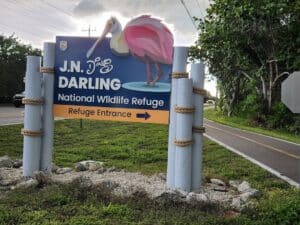
You can also read the post about everything you need to know about Ding Darling including hours of operation, how to get there, different areas to visit and the many things to do at Ding Darling. It was hands down one of the best parts of our trip to Southwest Florida.
Ding Darling National Wildlife Refuge, often simply referred to as “Ding Darling,” is a testament to the commitment to conservation and the undeniable allure of the wild. With its tranquil marshes, mangrove forests, and pristine waters, this refuge has become a haven for countless species of birds and other wildlife.
But what makes it truly remarkable is its significance to the world of birdwatching and the diverse range of species that you could find here.
Ding Darling covers over 6,400 acres of pristine coastal ecosystems on Sanibel Island.It was originally established as a wildlife preserve to protect critical waterfowl habitat. Over the years, Ding Darling has been at the forefront of conservation efforts, championing the preservation of coastal ecosystems and the species that rely on them.
In 2022, Ding Darling suffered devastating damage from Hurricane Ian. Please consider supporting Ding Darling as they continue to recover from this natural disaster.
Disclaimer: This post may include affiliate links. If you click one of them, I may receive a small commission at no extra cost to you.
Haven for Birds
Ding Darling has a unique combination of habitats. It has extensive mangrove forests that offer shelter and breeding grounds for a multitude of bird species. The nutrient-rich tidal flats and marshes provide abundant food sources. The refuge’s freshwater mimics natural wetland conditions, attracting an array of migratory birds during their seasonal journeys. With its location along the Gulf Coast, Ding Darling serves as a crucial stopover point for numerous migratory birds, making it a haven where birdwatchers can witness an incredible diversity of species year-round.
Over 245 bird species can be found all over the refuge. On almost any day, you should be able to see great blue herons, great egrets, snowy egrets, tri-colored herons, white ibis, roseate spoonbills, and many more.
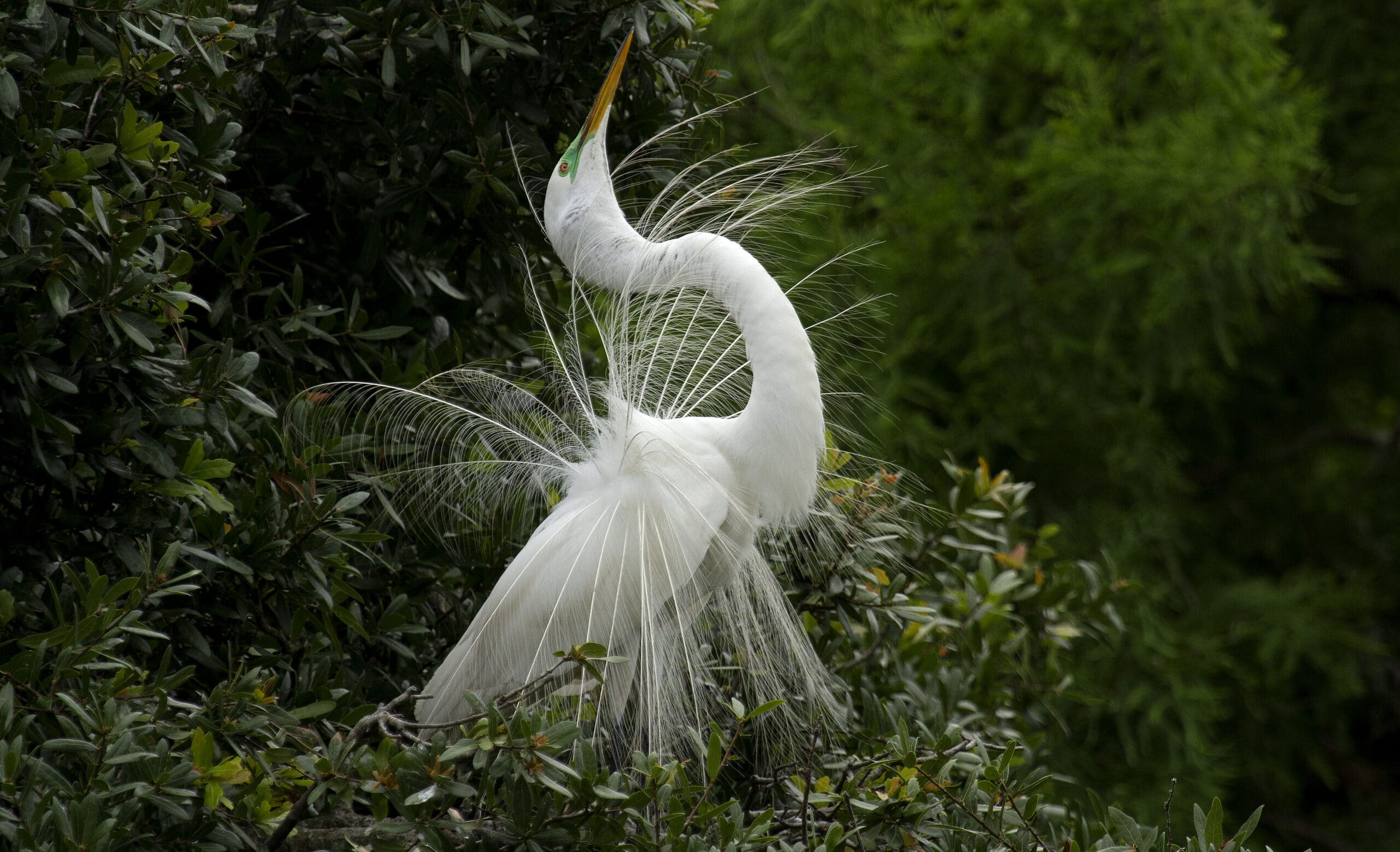
Best Birding Spots
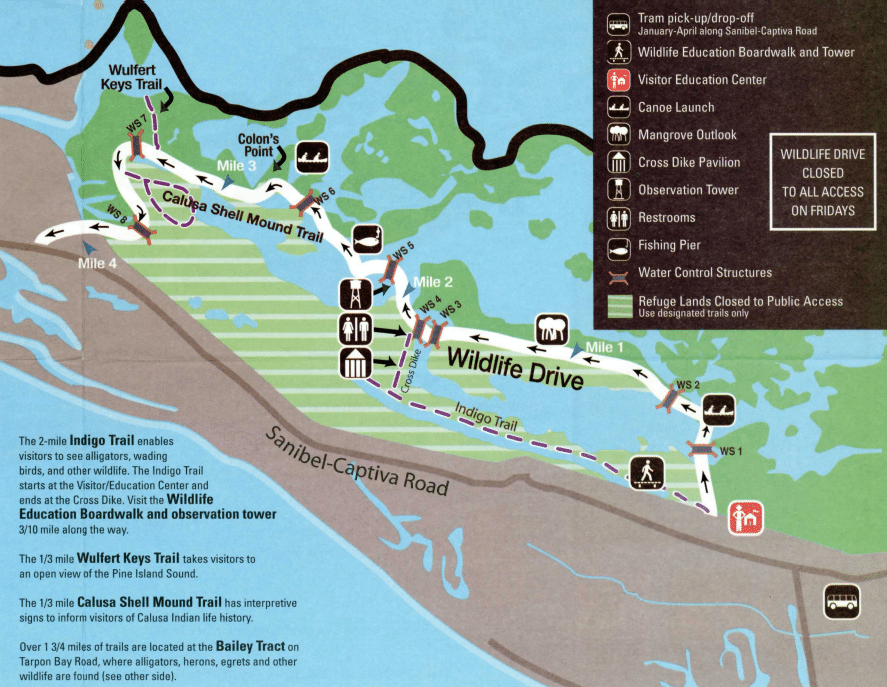
Indigo Trail
This was our favorite trail to walk. We could have stayed on it for hours. You cannot walk from the Visitor Center directly to the Boardwalk due to the damage from Hurricane Ian. You can start the walk from the Fees booth and it is less than 0.3 miles to the Boardwalk. This is a must! We probably spent an hour there watching all the activity including the resident alligator. You can turn and walk back to your vehicle or continue on the trail.
Wildlife Drive
Trek along the road and get a tour of the refuge with trails, openings, and viewing towers that will provide you with sights of herons, egrets, ibises and spoonbills. This trail can be walked, driven or biked.
Bailey Tract
This is a separate site that offers different, freshwater habitat but still great birding during the right time of year. This area has a trail system that will take you through upland habitat and past freshwater marsh where you can view ducks, shorebirds amongst other species.
Best Time to Birdwatch
The best time of day to birdwatch at Ding Darling is during the early morning hours, particularly around sunrise. The birds are active as they are singing and foraging for food. Additionally, the evening hours leading up to sunset can also offer rewarding birdwatching opportunities, as some species become more active again before settling down for the night.
We visited Ding Darling two different days. The first time was in the morning where we walked Indigo trail, to Cross Dike trail, then ventured back to the parking lot along Wildlife Drive. The walking route was about 4 miles. If you choose to do this, ensure you have lots of water, especially if it is hot.
Our second visit was in the late afternoon, just before closing, where we did the Wildlife Drive in the vehicle which definitely provided a different experience and the ability to see the refuge from a different angle.
As for the best time of year, every season will provide different experiences. From November to March, the refuge hosts many migratory birds, including shorebirds, waterfowl, and songbirds, escaping the colder northern climates. However, Ding Darling is a year-round birdwatching destination, and even in the warmer months, you can still encounter a wide variety of resident and nesting birds.
We visited in early June, so even though it was hot, we got over 30 species of birds and I was very happy with that!
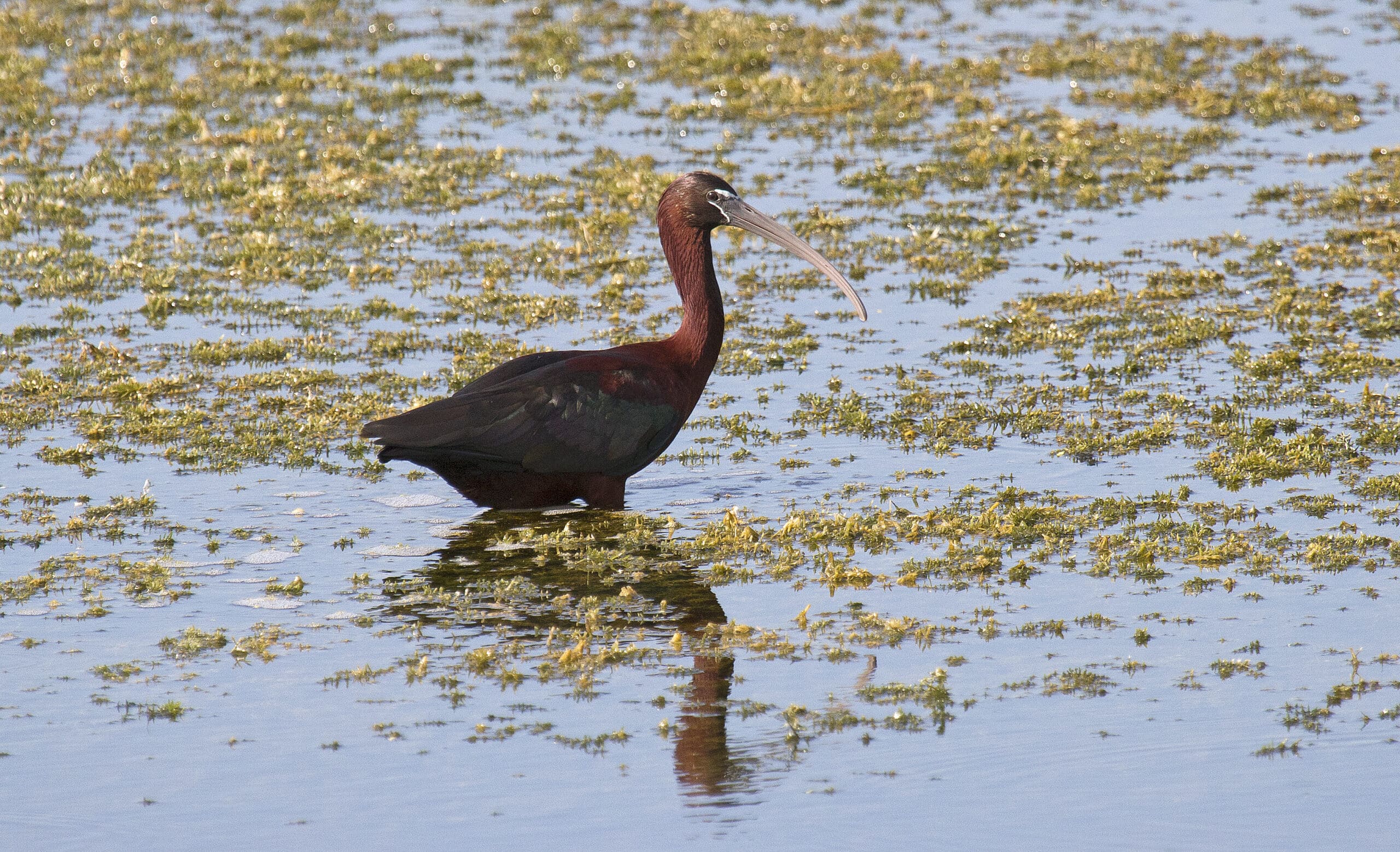
Iconic Birds of Ding Darling
Given the seasonal variations in birds you could find here, below is a list of the most commons birds you can expect to see when visiting Ding Darling:
Roseate Spoonbill:
One of the most striking birds of Ding Darling is the Roseate Spoonbill. These large wading birds are known for their vibrant pink plumage and distinctive spoon-shaped bills. Watching them sweep their bills through the shallow waters in search of food is a sight to behold. If you drive (or walk) to the viewing tower, there is a good chance you will see some. It was a target bird for me and I was so happy to finally see them!
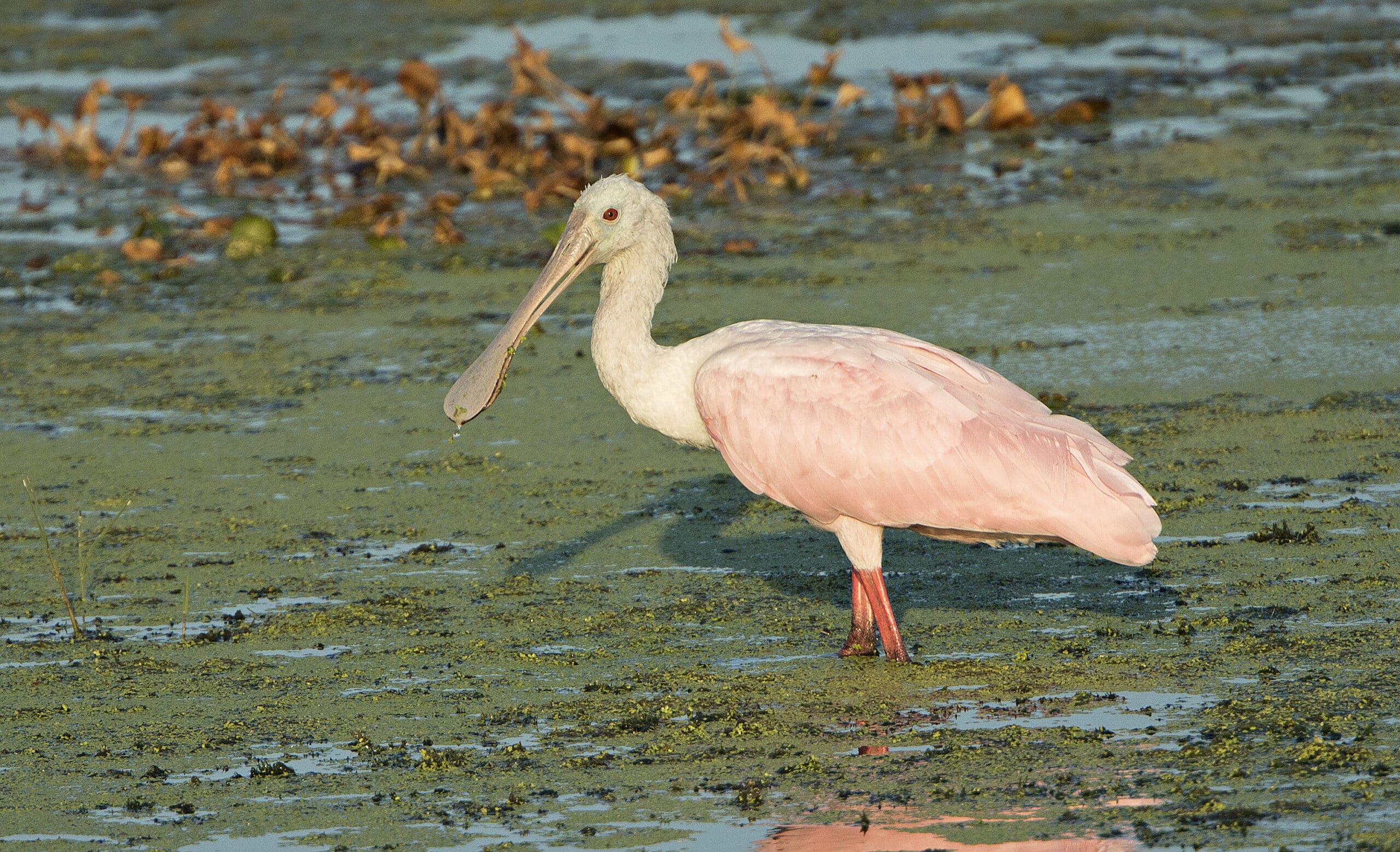
Great Blue Heron:
This majestic and iconic inhabitant of Ding Darling can be found all over. With its tall stature, blue-gray plumage, and dagger-like bill, it is often seen stalking its prey in the shallows.
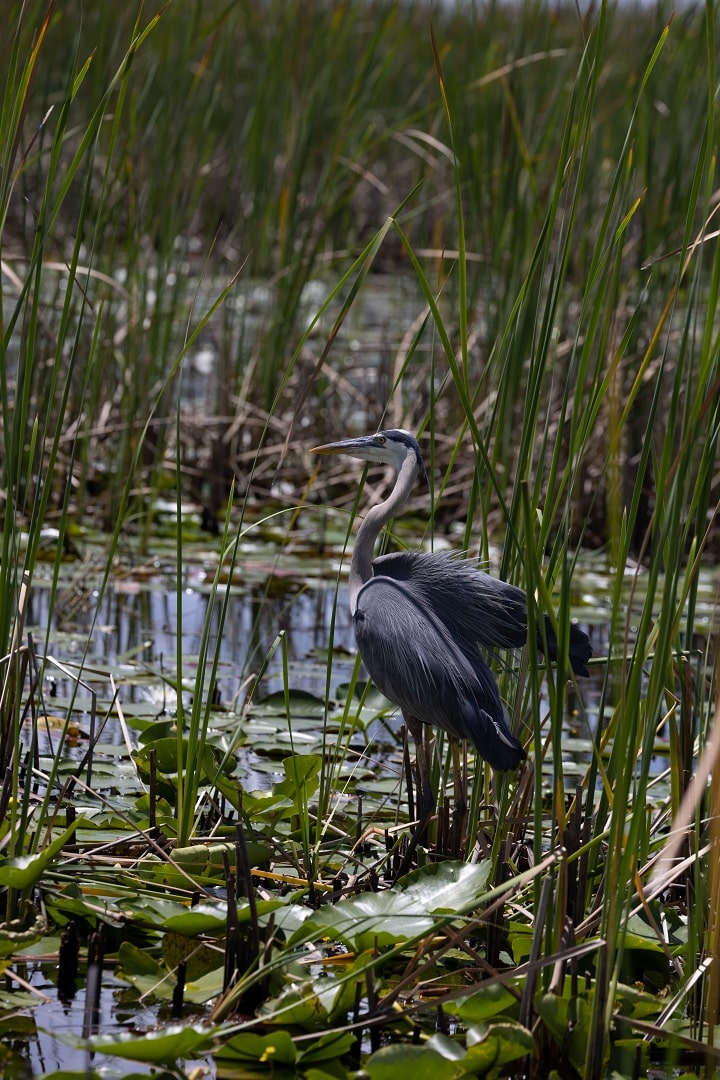
Osprey:
For fans of raptors, Ding Darling offers the opportunity to spot the Osprey. With its distinctive black eye mask and impressive hunting skills, the Osprey is a fascinating bird to observe. Keep an eye out for their nests, which are often perched high in the refuge’s trees.
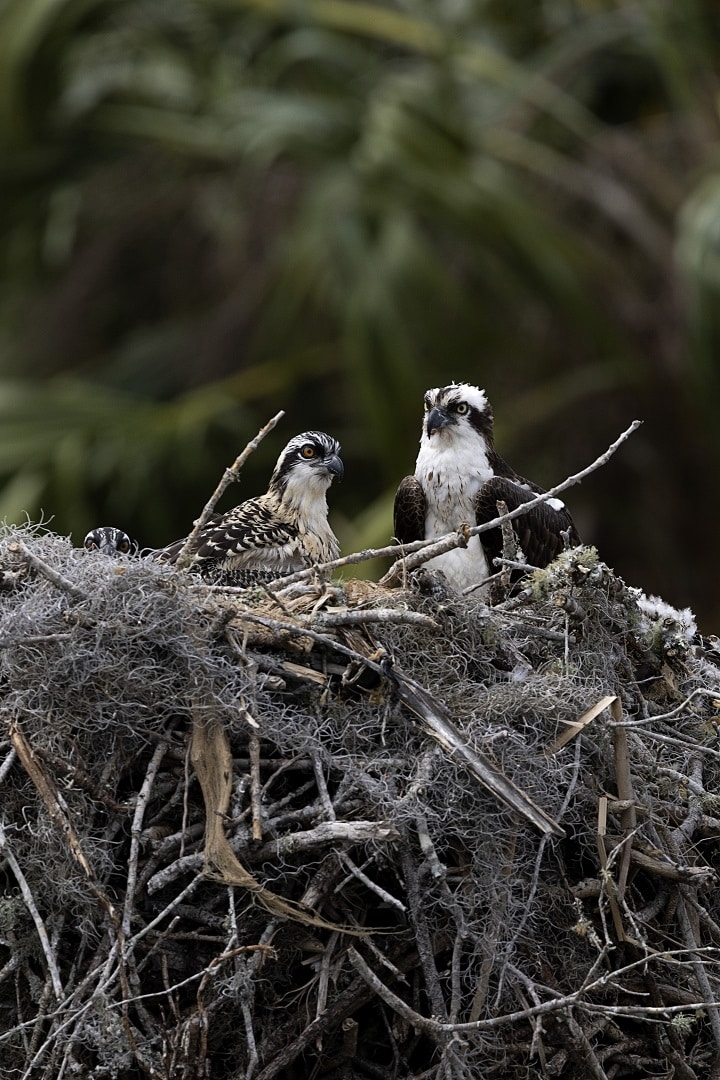
Yellow-crowned Night Heron:
As the sun sets over Ding Darling, keep an eye out for the Yellow-crowned Night Heron. These nocturnal herons are recognizable by their sleek gray plumage and striking yellow crowns. Witnessing them as they emerge from their daytime hiding spots to hunt is a memorable experience. I easily saw at least 7 when we were driving through the park. It was one of my favorite birds to see!
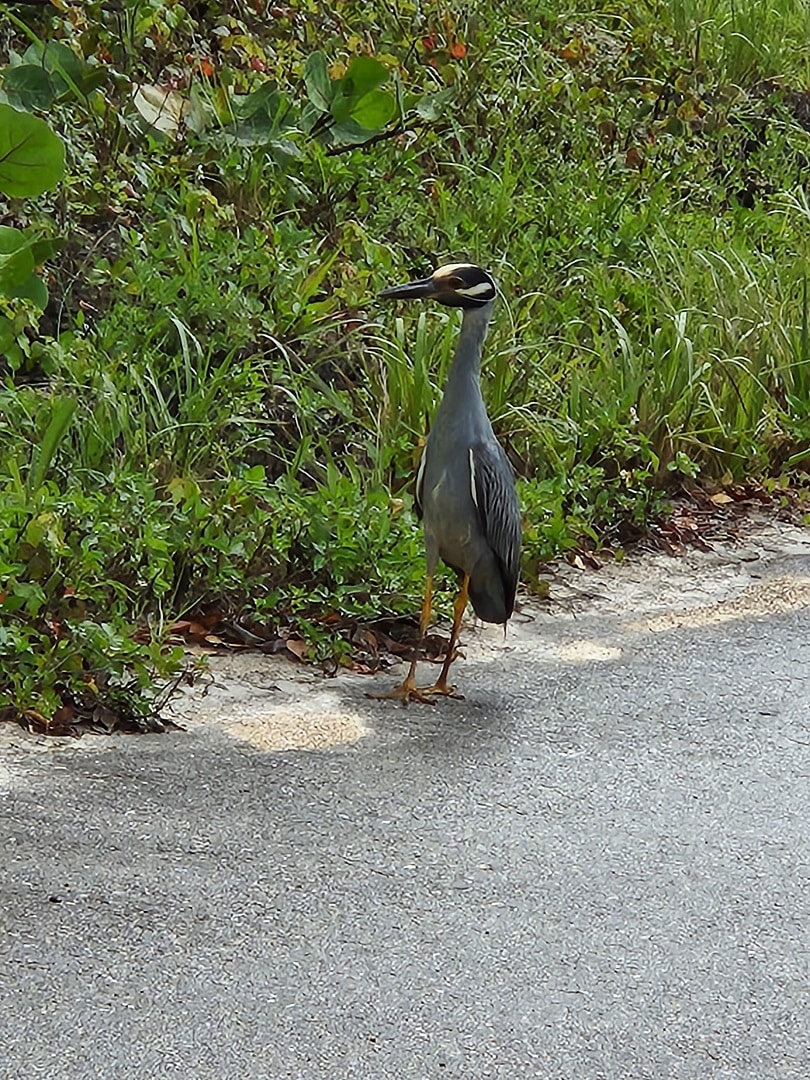
Reddish Egret:
Known for its entertaining hunting dance in shallow waters, the Reddish Egret is a medium-sized heron with reddish plumage.
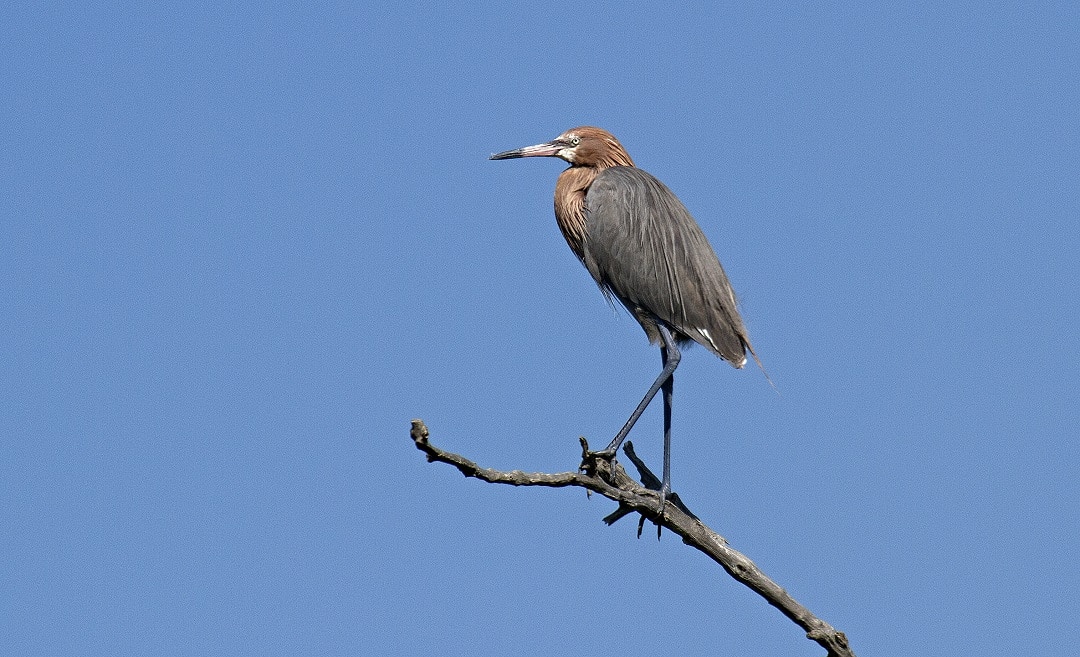
Anhinga:
Sometimes called the “Snakebird” for its long neck, the Anhinga is often seen swimming with just its head and neck above water or sunning with wings outstretched to dry. You can often find them hanging out high in the trees where they often roost.
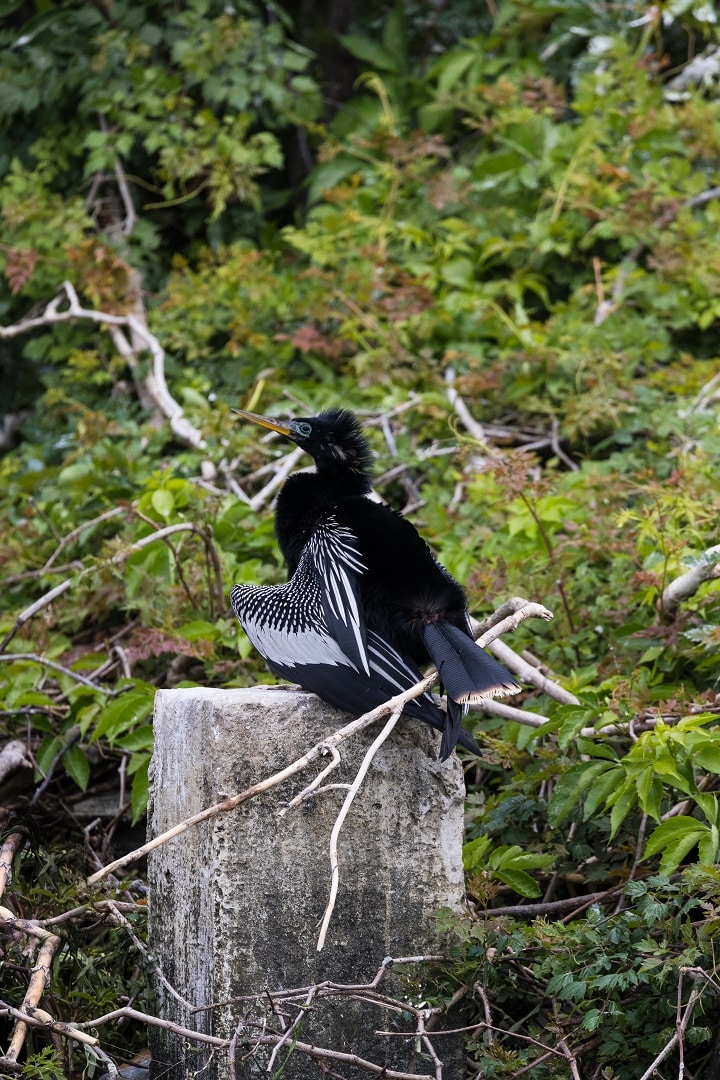
Tricolored Heron:
This medium-sized heron features a mix of blue-gray, lavender, and white plumage. It has a long, pointed bill and long neck. During the breeding season, it shows distinctive white plumes on its back.
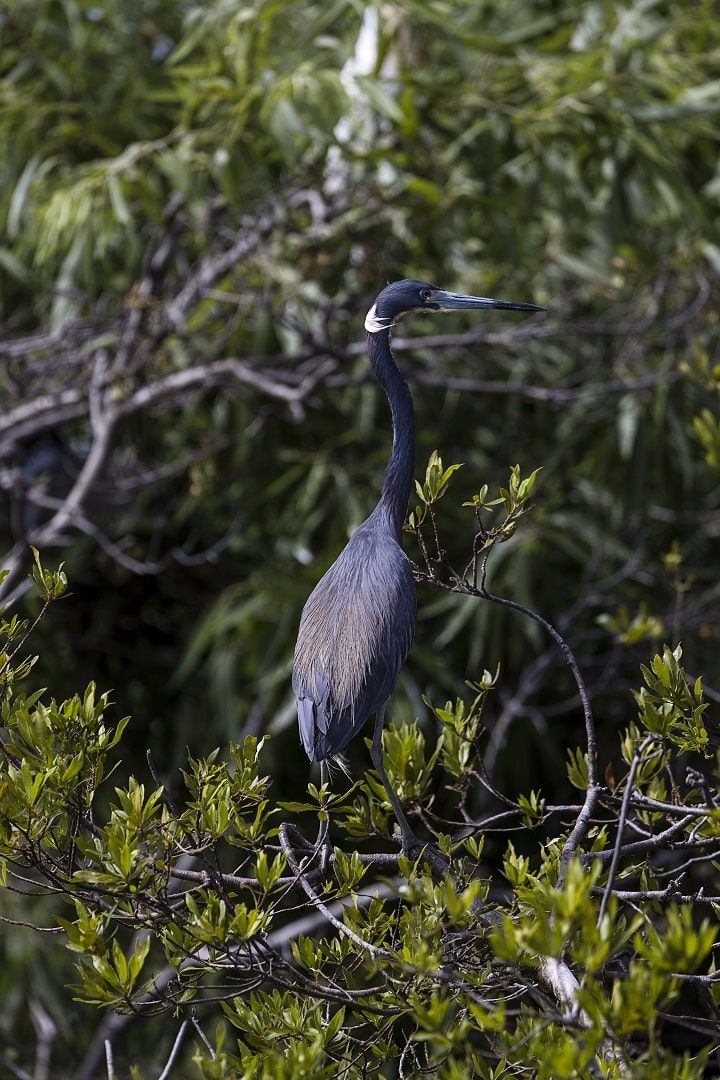
Green Heron:
The Green Heron is relatively small and stocky, with dark greenish-black feathers on its back and a rich chestnut-colored neck and chest. It has a short, dark bill and yellow-orange legs.
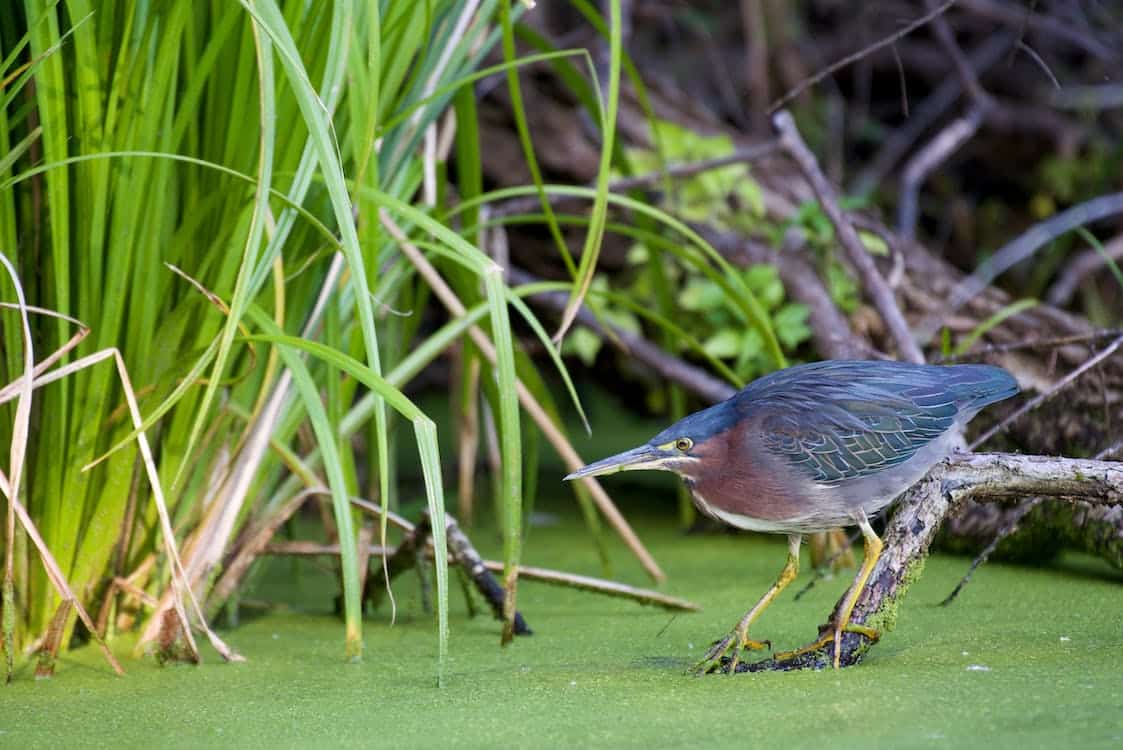
White Ibis:
The White Ibis is a medium-sized bird with all-white plumage, except for black wingtips that are usually visible only in flight. It has a long, downward-curved, orange bill and orange legs.
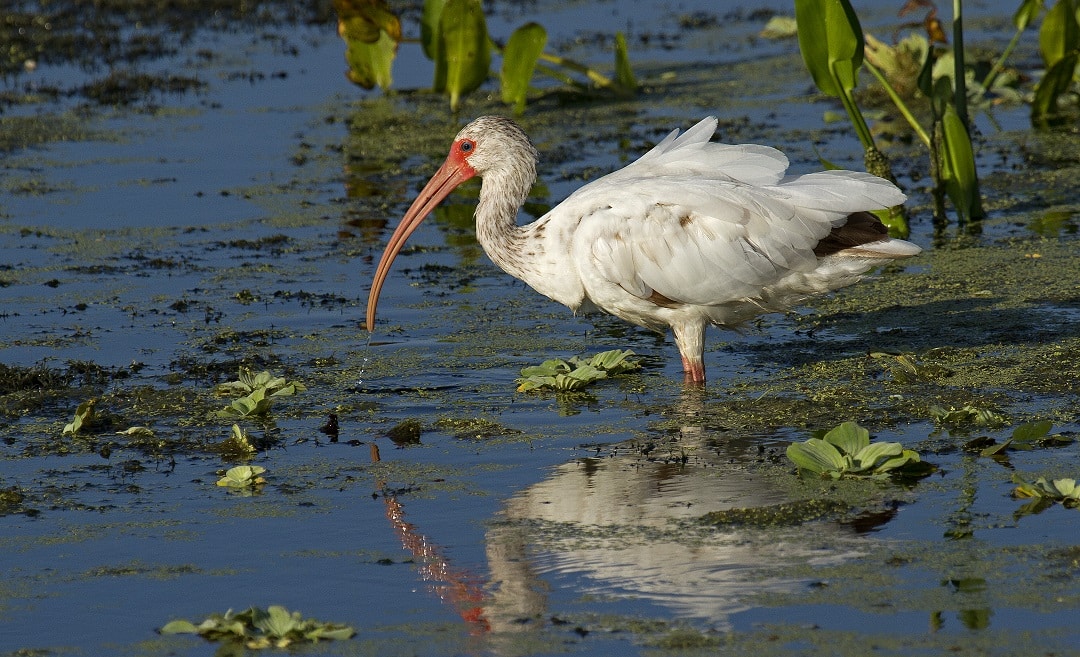
White Ibis
White Pelican:
Ding Darling Wildlife Refuge is also a winter home to the American White Pelican. These massive birds are known for their impressive wingspans and striking white plumage. Watching them soar gracefully over the refuge’s waters is a breathtaking experience.
Red-shouldered Hawk:
With its fiery red shoulders and haunting call, this hawk is a thrill to spot. It often perches in trees along the refuge’s trails, making it a rewarding find for birdwatchers.
Mangrove Cuckoo:
The Mangrove Cuckoo is a somewhat elusive bird of Ding Darling, known for its distinctive call and preference for the mangrove habitat. Patience and keen listening are key to spotting this secretive cuckoo among the refuge’s dense mangrove thickets.
Wood Stork: This large, wading bird with a bald head is a regular resident of the refuge. It’s often seen foraging in the wetlands.
Mottled Duck: A resident species, the Mottled Duck is similar to the Mallard but adapted to coastal marshes.
Birds of Ding Darling Checklist
Want to know what you could possibly see in Ding Darling? Here is a checklist of the birds you may find in the refuge and surrounding area.

A visit to Ding Darling is more than just a day out; it’s an opportunity to connect with nature and contribute to the ongoing efforts to preserve these magnificent creatures and their habitats.
Whether you’re an avid birder or just appreciate the beauty of nature, Ding Darling offers an unforgettable experience that underscores the importance of conservation and the joy of birdwatching.
The birds of Ding Darling were so amazing to see and experience that it’s worth adding to your things to do when visiting Sanibel Island.
Subscribe to my newsletter below to keep updated on all the things you can do to explore the outdoor world and connect with nature.


